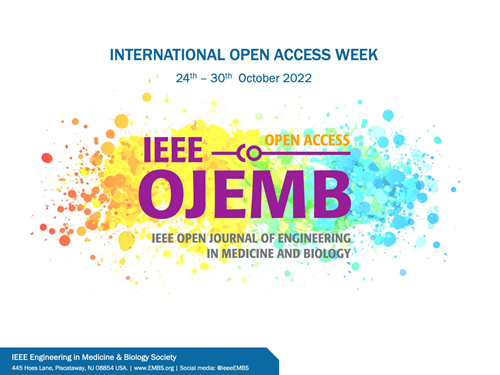MVBNSleepNet: A Multi-View Brain Network-Based Convolutional Neural Network for Neonatal Sleep Staging
IF 2.9
Q3 ENGINEERING, BIOMEDICAL
IEEE Open Journal of Engineering in Medicine and Biology
Pub Date : 2025-03-05
DOI:10.1109/OJEMB.2025.3548002
引用次数: 0
Abstract
MVBNSleepNet:一种基于多视图脑网络的新生儿睡眠分期卷积神经网络
目标:为新生儿睡眠分期开发一种高性能和强大的解决方案,该解决方案结合了空间拓扑信息和大脑功能连接,这在现有方法中经常被忽视。方法:提出一种基于多视图脑网络的卷积神经网络MVBNSleepNet。该框架集成了多视图脑网络(MVBN),从线性时间相关性、信息论和相动力学角度表征脑功能连接,提供全面的空间拓扑信息。掩蔽机制通过模拟随机丢失或低质量信号条件来增强模型的鲁棒性。此外,注意机制关注大脑网络的关键区域,揭示睡眠时大脑的结构连接,而CNN模块从大脑网络中提取空间特征,并将其分类到特定的睡眠阶段。该模型在64个新生儿脑电图记录的临床数据集上使用留一个受试者验证策略进行了验证。结果:MVBNSleepNet在两阶段睡眠任务(睡眠和清醒)中的准确率为83.9%,在三阶段任务(活跃睡眠,安静睡眠和清醒)中的准确率为76.4%,优于最先进的方法。结论:提出的MVBNSleepNet为新生儿睡眠分期提供了一个强大而准确的解决方案,并为早期神经系统的功能连接提供了有价值的见解。
本文章由计算机程序翻译,如有差异,请以英文原文为准。
求助全文
约1分钟内获得全文
求助全文
来源期刊

IEEE Open Journal of Engineering in Medicine and Biology
ENGINEERING, BIOMEDICAL-
CiteScore
9.50
自引率
3.40%
发文量
20
审稿时长
10 weeks
期刊介绍:
The IEEE Open Journal of Engineering in Medicine and Biology (IEEE OJEMB) is dedicated to serving the community of innovators in medicine, technology, and the sciences, with the core goal of advancing the highest-quality interdisciplinary research between these disciplines. The journal firmly believes that the future of medicine depends on close collaboration between biology and technology, and that fostering interaction between these fields is an important way to advance key discoveries that can improve clinical care.IEEE OJEMB is a gold open access journal in which the authors retain the copyright to their papers and readers have free access to the full text and PDFs on the IEEE Xplore® Digital Library. However, authors are required to pay an article processing fee at the time their paper is accepted for publication, using to cover the cost of publication.
 求助内容:
求助内容: 应助结果提醒方式:
应助结果提醒方式:


